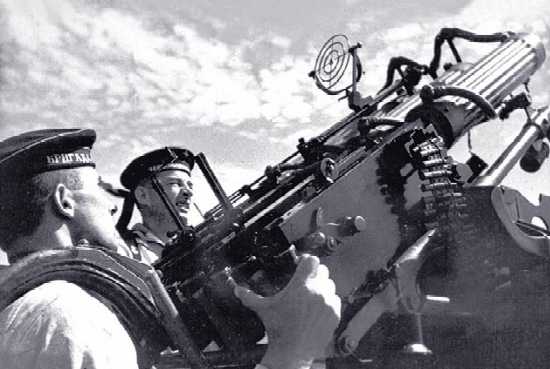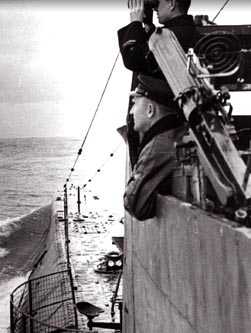|
Along with many other countries, Russia bought samples of the Maxim in the late 19th century and the Russian Navy adopted it during the Russo-Japanese War, using it extensively for the next half-century. Prior to World War II it was the main light AA weapon of the Soviet Navy. During World War II the Soviet Navy used it in single, twin and quad mountings. As did most nations, the Soviets quickly discovered that rifle-caliber guns were ineffective against modern aircraft and the Maxim was replaced by the heavier 12.7 mm (0.50") DShK MG on most ships. However, the Maxim was still widely used to arm small and auxiliary ships. This machine gun was recoil operated, usually water-cooled and used 250-round belts. The data that follows is specifically for the Russian version except where noted. |

Russian 7.62 mm Maxim Machine Gun in Quad Mounting |

Single Maxim 7.62 mm Machine Gun on Russian Submarine |